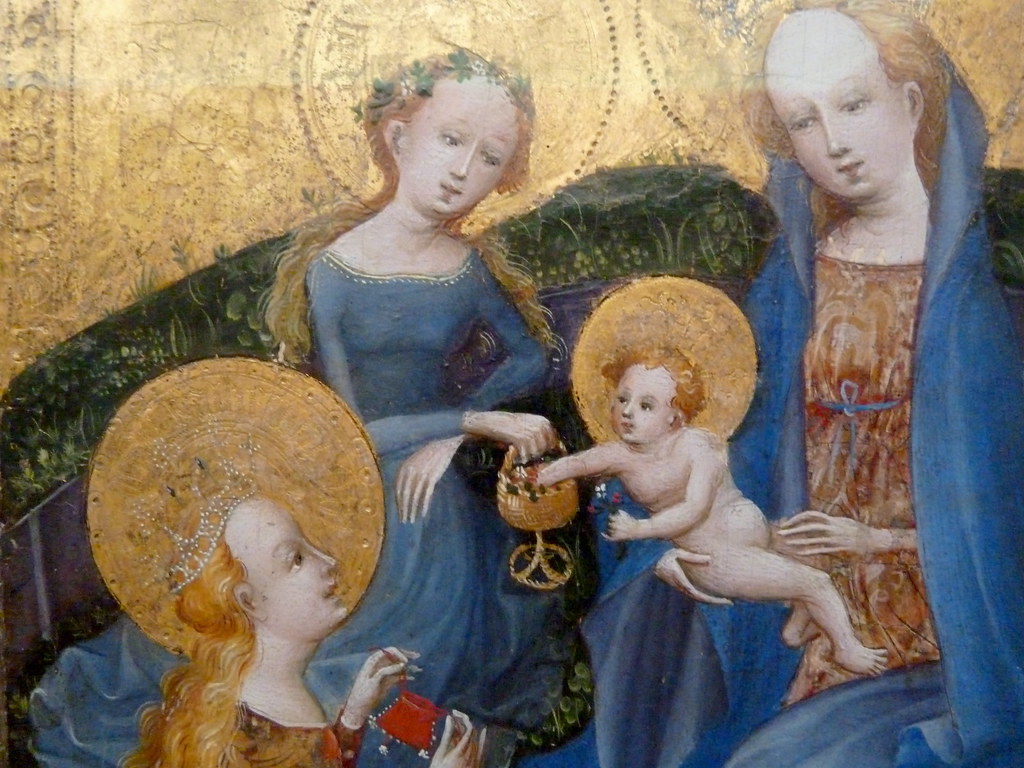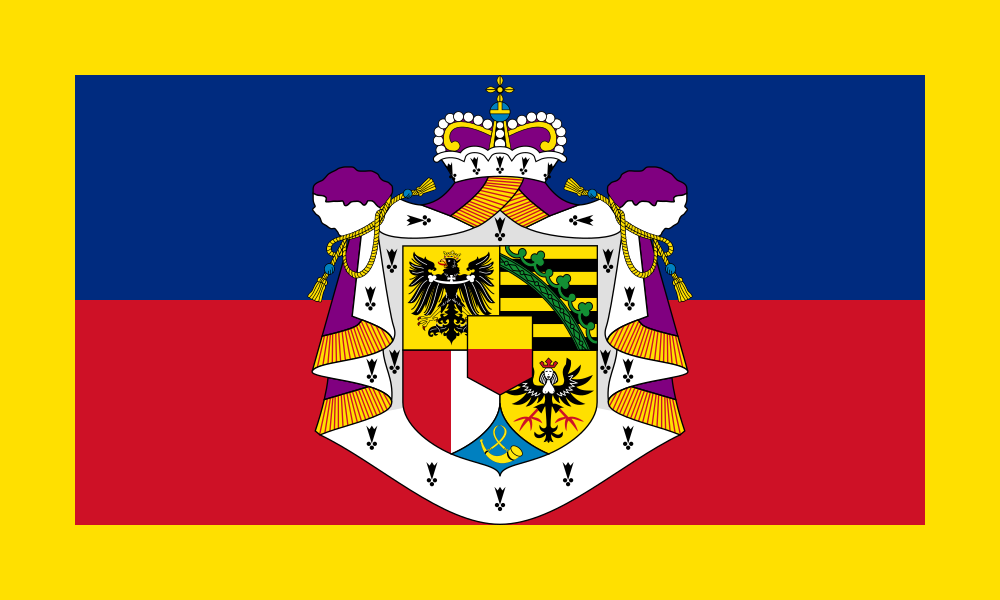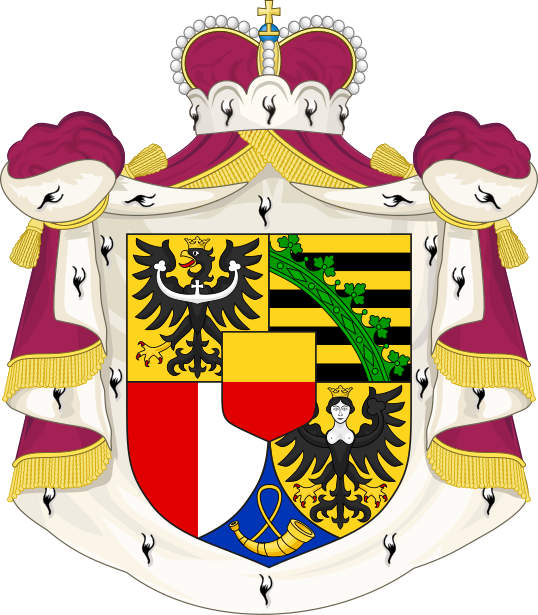Yesterday was the feast of St Blaise, and following Mass I had the traditional blessing of my throat.
John Dillon posted an impressive selection of images of St Blaise on the Medieval Religion discussion group:
Not to be confused with his homonyms Blasius of Amorion, Blasius of
Caesarea, Blasius of Veroli, and Blasius of Verona, the thaumaturge
Blasius of Sebaste (d. circa 316, supposedly) is popularly known in
English by a French form of his name (Blaise; other European forms
include, but are certainly not limited to, Blasios / Vlasios, Vlaho /
Blaž, Blasius, Blas, and Biagio / Biase). His cult is first attested
from the sixth century, when the medical encyclopedist Aetius of Amida
reports his being invoked in cases of illness of the throat.
Absent
both from the earliest witnesses of the pseudo-Hieronymian Martyrology
and from the probably originally late fourth-century Syriac Martyrology
surviving in a manuscript written at Edessa in c. 411, and thus absent
as well from the hypothetical fourth-century Greek martyrology thought
to have provided a fund of feasts common to both, Blasius has both a
legendary pre-metaphrastic Passio (BHG 276-276c; first attested from the
eighth century) and a metaphrastic one (BHG 277); beyond these Greek
texts there are versions in Latin and in other languages. These make him
a physician of Sebaste in Armenia (now Sivas in Turkey) who is elected
bishop, goes into hiding to avoid the Licinian persecution, lives in a
cave where with the sign of the cross he cures sick animals, is sought
out, arrested and imprisoned, tends the sick, operates miracles, is
tortured, and finally is decapitated. Later versions have him flayed
with carding combs prior to execution. Blasius' miracles include saving a
boy from choking to death on a fishbone and causing a wolf to restore
to a widow a piglet that it had taken from her. In the later Middle Ages
his reputed care for ailments of the throat caused Blasius to be
numbered among the Fourteen Holy Helpers; his association with animals
made him a patron of keepers of livestock.
Since the tenth
century Blasius has been the patron saint of Dubrovnik (formerly
Ragusa), where an originally twelfth(?)-century head reliquary of him,
formed as a Byzantine crown, is kept in that city's early modern
katedrala Marijina Uznesenja (cathedral of the Assumption of the BVM):
There is an arm reliquary as well (in these photos shown along with the head reliquary):
http://tinyurl.com/ppqbucl
Supplementing
Gordon Plumb's post of earlier today, herewith some links to further
period-pertinent images of St. Blasius of Sebaste:
a) Blasius'
martyrdom as depicted in the late tenth- or very early eleventh-century
so-called Menologion of Basil II (Città del Vaticano, BAV, cod. Vat. gr.
1613, p. 390):
http://tinyurl.com/p4yf9p7
b)
Blasius delivering the piglet to the widow (upper register) and
Blasius' martyrdom as depicted in the late eleventh- or very early
twelfth-century frescoes of the Chapelle des Moines at Berzé-la-Ville
(Saône-et-Loire):
http://www.flickr.com/photos/magika2000/8268154248/
Detail view (Blasius delivering the piglet to the widow)
http://www.wga.hu/art/zgothic/mural/11c1/14berze.jpg
c)
Blasius' martyrdom (three scenes) as portrayed, perhaps by Roger of
Helmarshausen, on a long side of a late eleventh- or early
twelfth-century portable altar (copper gilt over wood) executed for the
abbey of Abdinghof and now in the Erzbischöfliches Diözesanmuseum und
Domschatzkammer in Paderborn:
http://tinyurl.com/jb3gwu6
d)
Blasius (at left) as depicted in an early twelfth-century mosaic in the
cupola di San Leonardo in Venice's basilica cattedrale patriarcale di
San Marco:
http://www.wga.hu/art/zgothic/mosaics/6sanmarc/2cusouth.jpg
Detail views:
http://tinyurl.com/lgjlne4
http://tinyurl.com/lvudkkf
e) Blasius as depicted in the mid- or slightly later twelfth-century mosaics of the Cappella Palatina in Palermo:
f)
Blasius (lower register, second from left) receiving a book from Duke
Henry as depicted in the late twelfth-century Gospels of Henry the Lion
(c. 1188; Wolfenbüttel, Herzog August Bibliothek, cod. Guelf. 105
Noviss. 2°, fol. 194r):
http://www.wga.hu/art/zgothic/miniatur/1151-200/1german/2gospel1.jpg
g)
Blasius (second from right) as depicted in the late twelfth-century
frescoes (1196) of the chiesa rupestre di San Biagio at San Vito dei
Normanni (BR) in Apulia:
http://tinyurl.com/ln866mw
h)
Blasius as depicted in a late twelfth- or early thirteenth-century
fresco in the santuario di Maria SS. Regina (a.k.a. Santa Maria
d'Anglona) at Tursi (MT) in Basilicata:
http://tinyurl.com/yhkhges
i)
Blasius as depicted in late twelfth- or early thirteenth-century gold
and enamel work on his head reliquary in the treasury of Dubrovnik's
katedrala Marijina Uznesenja:
j)
The widow brings the pig's head to the imprisoned Blasius (below: wolf
devouring the pig) as depicted in an initial "T" in a thirteenth-century
ms. of Magnum legendarium austriacum (Zwettl, Stiftsbibliothek, cod.
13, fol. 105v):
http://tarvos.imareal.oeaw.ac.at/server/images/7002571.JPG
k)
Blasius confronting the Roman governor persecuting him as depicted in a
thirteenth-century glass window panel from the area of Soissons, now in
the Louvre:
http://tinyurl.com/2lkkb6
l)
Scenes from Blasius' legend as depicted in the earlier
thirteenth-century St. Blaise lancet of the "St. Blaise window" (Bay
217; c. 1230-1240; the other two lancets depict scenes of St. George
and of St. Thomas of Canterbury) in the cathédrale Notre-Dame in
Coutances:
http://therosewindow.com/pilot/Coutances/w217c-Frame.htm [with links to detail views]
and at right here:
http://tinyurl.com/j3tuccc
Other detail views:
http://tinyurl.com/j3k94vv
http://tinyurl.com/h28e7cp
http://tinyurl.com/j2zbk78
m)
Blasius healing a throat as depicted in a mid-thirteenth-century
gradual for the Use of the abbey of Fontevrault (c. 1250-1260; Limoges,
Bibliothèque municipale, ms. 2, fol. 63v):
http://www.enluminures.culture.fr/Wave/savimage/enlumine/irht1/IRHT_043441-p.jpg
n)
Blasius as depicted (at right, flanking St. John Climacus; at left, St.
George of Lydda) as depicted in a later thirteenth-century Novgorod
School icon in the State Russian Museum, St. Petersburg:
http://www.icon-art.info/masterpiece.php?lng=en&mst_id=512
o)
Blasius' martyrdom as depicted in a late thirteenth-century copy of
French origin of the
Legenda aurea (San Marino, CA, Huntington
Library, ms. HM 3027, fol. 32v; image greatly expandable):
http://digitalassets.lib.berkeley.edu/ds/huntington/images//000962A.jpg
p)
Blasius (at left; at right, Pope St. Urban I) in the late
thirteenth-century Livre d'images de Madame Marie (c. 1285-1290; Paris,
BnF, ms. Nouvelle acquisition française 16251, fol. 91r):
http://tinyurl.com/yk9p76d
q)
Blasius (at center, betw. Sts. Eleutherius of Illyria and Hypatius [of
Gangra?]) as depicted in the earlier fourteenth-century frescoes (between
c. 1312 and 1321/1322) in the nave of the monastery church of the
Theotokos at Gračanica in, depending on one's view of the matter, either
Serbia's province of Kosovo and Metohija or the Republic of Kosovo:
http://tinyurl.com/d2mrvqk
Detail view (Blasius):
http://tinyurl.com/lm44odu
r)
Blasius as portrayed in an earlier fourteenth-century (second quarter)
chiefly silver reliquary bust probably of French manufacture, formerly
in the collegiate church at Braunschweig dedicated to him (commonly
known as the Braunschweiger Dom) and now in the Bode Museum in Berlin:
http://tinyurl.com/pqzvjwv
s)
Blasius (at left; at right, St. Babylas) as depicted in the earlier
fourteenth-century frescoes (betw. 1335 and 1350) in the altar area of
the church of the Holy Ascension at the Visoki Dečani monastery near Peć
in, depending on one's view of the matter, either the Republic of
Kosovo or Serbia's province of Kosovo and Metohija:
http://tinyurl.com/y89acds
t)
Blasius' flight from persecution as depicted in a
mid-fourteenth-century copy, from the workshop of Richard and Jeanne de
Montbaston, of the
Legenda aurea in its French-language version by
Jean de Vignay (1348; Paris, BnF, ms. Français 241, fol. 65v):
http://tinyurl.com/yzmwu82
u)
Blasius (at far right, after Sts. Spyridon the Wonderworker and Clement
of Ohrid) as depicted in the later fourteenth-century frescoes (1360s
and 1370s; restored in 1968-1970) in the church of St. Demetrius in
Marko's Monastery at Markova Sušica (near Skopje) in the Former Yugoslav
Republic of Macedonia:
http://tinyurl.com/h5ancvj
Detail view (Blasius):
http://tinyurl.com/zgp4cvb
v)
Blasius (at left; at right, St. Prochorus) as depicted in the later
fourteenth-century frescoes (1375) in the church of St. George in
Longanikos (Laconia administrative region):
http://tinyurl.com/zfpap8g
w)
Blasius (at left) as portrayed in relief on a later fourteenth- or
fifteenth-century mezzanino struck by the Republic of Ragusa:
http://www.coingallery.de/Heilige/B/Blasius_1.jpg
x)
Blasius (while at prayer, attacked by a demon) as depicted in a late
fourteenth- or early fifteenth-century copy of the
Legenda aurea in
its French-language version by Jean de Vignay (Rennes, Bibliothèque de
Rennes Métropole, ms. 266, fol. 69v):
http://tinyurl.com/hrb7yk2
y)
Blasius as portrayed holding a model of Ragusa in a fifteenth-century
silver-gilt statuette kept on the high altar of Dubrovnik's katedrala
Marijina Uznesenja:
z)
Blasius as depicted (at left; at right, St. Spyridon the Wonderworker;
both protecting livestock) in an early fifteenth-century Novgorod School
icon (c. 1407) in the State Historical Museum, Moscow:
http://www.icon-art.info/masterpiece.php?lng=en&mst_id=562
aa)
Blasius (second from left; at far left, St. Bartholomew the Apostle) as
depicted by Masaccio in his earlier fifteenth-century San Giovenale
triptych (c. 1424/25) in the chiesa di San Pietro in Cascia di Reggello
(FI) in Tuscany:
http://www.wga.hu/art/m/masaccio/z_panels/giovena1.jpg
bb)
Blasius' martyrdom as depicted by Mariotto di Nardo in an earlier
fifteenth-century predella panel (c. 1425) in the Musée des Beaux-Arts
in Rennes:
cc)
Blasius as portrayed (at centre; at left, St. Ulrich; at right, St.
Erasmus of Formia) in the earlier fifteenth-century polychromed wooden
statues (before 1436) re-used in the central compartment of the
otherwise early sixteenth-century winged altarpiece (1517/1518; restored
c. 2000) by Jörg Lederer in the choir of the Kirche St. Blasius in
Kaufbeuren:
The altarpiece as a whole:
http://tinyurl.com/zwubqp7
dd)
Blasius as depicted in a mid-fifteenth-century panel painting (c.
1450), sometimes attributed to Nero di Bicci, in the Musei Capitolini in
Rome:
http://tinyurl.com/hyd6xjt
https://christbearers.files.wordpress.com/2012/02/st-blaise-capitoline-museum.jpg?w=837
ee)
Blasius as depicted in a mid-fifteenth-century initial (c. 1450-1460)
by the Master of the Murano Gradual, cut from a gradual and now in the
J. Paul Getty Museum in Los Angeles:
http://www.nga.gov/exhibitions/2005/miniature/index.shtm
http://www.getty.edu/art/exhibitions/power_piety/
ff)
Blasius as depicted in a later fifteenth-century Novgorod School icon
in the Karelian Fine Arts Museum, Petrozavodsk, Russia:
http://www.icon-art.info/hires.php?lng=en&type=1&id=590
gg)
Scenes from Blasius' legend as depicted in a later fifteenth-century
copy of Vincent of Beauvais'
Speculum historiale in its
French-language translation by Jean de Vignay (1463; Paris, BnF, ms.
Français 51, fol. 58r):
http://tinyurl.com/yjmvnju
hh)
Blasius as depicted in the central panel of Martín de Soria's later
fifteenth-century San Blas Altarpiece (1464) in the iglesia de San
Salvador at Luesia (Zaragoza):
The altarpiece as a whole:
Blasius' martyrdom as depicted in one of the predella panels:
Expandable views of panels depicting scenes from Blasius' legend start about halfway down this page:
http://tinyurl.com/ye3b3qn
ii)
Blasius as depicted in a detached later fifteenth-century fresco (between
1475 and 1500; from the refectory of the convento di San Biagio in
Cesena [FC] in Emilia-Romagna) in that city's Pinacoteca comunale:
jj)
Blasius holding a model of Ragusa as portrayed in a later
fifteenth-century statue on the Ploče Gate in the same city (now of
course Dubrovnik):
https://travelsofed.files.wordpress.com/2011/11/100_4555.jpg
kk)
Blasius as depicted (at far right in the lower register above the
predella) by Carlo and Vittore Crivelli in their later fifteenth-century
polyptych of Monte San Martino (c. 1477-1480) in the chiesa di San
Martino vescovo in Monte San Martino (MC) in the Marche:
Detail view of Blasius:
ll)
Scenes from Blasius' legend as depicted in twenty late
fifteenth-century painted panels (c. 1480-1490) mounted on the north
wall of the nave of the Kirche St. Blasius in Kaufbeuren:
Detail view (the women forced into slavery):
http://tinyurl.com/gwdjolo
mm)
Blasius (at left, holding a candle; at right, St. John the Baptist) as
depicted by Hans Memling on a wing of his Passion (or Greverade)
Altarpiece of 1491 in the Museum für Kunst- und Kulturgeschichte in
Lübeck:
nn)
Blasius (second from right, flanking the BVM; at far right, St. Roch /
Rocco) as depicted by a Tuscan follower of Neri di Bicci in a late
fifteenth-century panel painting (1498; for the abbey of Santa Maria
della Salute et San Niccolao in Buggiano [PT]), exhibited by the
Carabinieri in 2015 as part of the exposition "La memoria ritrovata" in
Cagliari:
oo)
Blasius (third from left; after St. Florus of Illyricum and St.
Nicholas of Myra and before St. Anastasia of Sirmium) as depicted in a
late fifteenth- or early sixteenth-century Novgorod School wooden
triptych in the State Tretyakov Gallery, Moscow:
http://www.icon-art.info/masterpiece.php?lng=en&mst_id=513
pp)
Blasius (at left, holding a model of Ragusa; at right, St. Paul the
Apostle) as depicted by Nikola Božidarević / Nicholas of Ragusa in his
very early sixteenth-century triptych (c. 1501) in the Dominican
convent in Dubrovnik:
The triptych as a whole:
qq)
Blasius as portrayed holding a model of Ragusa in an early
sixteenth-century statue (1503) in the Kulturno-povijesni muzej in
Dubrovnik:
http://dumus.hr/files/g/3-28/VA-85.jpg
Detail view (model of Ragusa):
http://dumus.hr/files/g/3-28/530x350-7/VA-85_1.jpg
rr)
Blasius as portrayed in a stone bust on the early sixteenth-century
Field Gate (1506) at Ragusa's former dependency of Ston
(Dubrovačko-neretvanska županija) in Croatia:
http://www.kroatien-netz.de/data/media/148/Ston_Saline_Stadt_Kloster_030_680.jpg
ss)
Blasius as portrayed in relief (at far right) among the Fourteen Holy
Helpers on the early sixteenth-century tomb of the Kurfürstin Anna
(1512) in the Evangelisch-lutherische Pfarrkirche St. Maria in
Heilsbronn (Lkr. Ansbach) in Bayern:
http://tinyurl.com/zbdf72j
tt)
Blasius as portrayed in an early sixteenth-century ceiling boss (c.
1519) in the choir of the Evangelisch-lutherische Kirche St. Sixti in
Northeim (Lkr. Northeim) in Niedersachsen:
http://fotos.verwaltungsportal.de/seitengenerator/viib_blasius_400.jpg
uu)
Blasius as depicted by Fermo Stella in an earlier sixteenth-century
panel painting of the Madonna between St. Blasius and St. John the
Baptist (1536) in the Museo Valtellinese di Storia e Arte in Sondrio
(VA) in Lombardy (detail view):
http://www.wwmm.org/immagini/z_848.jpg
vv)
Blasius as depicted (at upper right) in an unframed earlier
sixteenth-century polyptych (1537) in the chiesa del Purgatorio at Ruvo
di Puglia (BA) in Apulia:
Detail view of Blasius as reproduced on a poster; image greatly expandable:
http://www.ruvodipugliaweb.it/sanbiagio/programma_S__Biagio.jpg
ww)
Blasius as depicted by Theofanis Strelitzas-Bathas (a.k.a. Theophanes
the Cretan) in the mid-sixteenth-century frescoes (1545 and 1546) in the
katholikon of the Stavronikita monastery on Mt. Athos:
http://images.oca.org/icons/lg/February/0203Blaise.JPG
xx)
Blasius as depicted (twice) by George / Tzortzis the Cretan in the
mid-sixteenth-century frescoes (1546/47) in the Dionysiou monastery on
Mt. Athos:
1) full-length portrait:
http://tinyurl.com/gtfjwcq
2) martyrdom:
http://tinyurl.com/qhbz2qz











![[San+Blas.jpg]](https://blogger.googleusercontent.com/img/b/R29vZ2xl/AVvXsEhlSejgx_3QnyNyXpumV-egl-ZDWAsEM4NGL9CZU_CO8rCB-46xZBJDR4Cd7yOn36EYKNwFTZ0cqDsY5e788K2tJMq4opi0mrW0-tTsBomCbh-PqMHxjA9iVy1-MjadeVjtSYsPBSc9BlQ/s1600/San+Blas.jpg)
![[Vista+general.jpg]](https://blogger.googleusercontent.com/img/b/R29vZ2xl/AVvXsEju1XwU8XnhYmLrXZ-Dmstg1tmJo9orA1THHo3c2uyJDPvPUFB8-gCwnq8GItEhOxQwaBinz01vju9aFZRvkpZKT6Tasi25iFLJHv_2NEdrKf_GrRaiE2olTX6ZCiEvG4oWUO3awlwjV5E/s1600/Vista+general.jpg)
![[San+Blas++martirizado+con+el+rastrillo.jpg]](https://blogger.googleusercontent.com/img/b/R29vZ2xl/AVvXsEheuLwA3yyfiWF0giD1F1kk2SdA6zREnbzGO9qH4UY6sk3KqOM3RoeVLtLJOFykbFe6ofNqpnQg8V9AnjzQZCevCbeJClK2S2GGorSaUJub01KjFvr5J2Ee7ILRqXoVBFyk5dWlqiVHjZs/s1600/San+Blas++martirizado+con+el+rastrillo.jpg)

